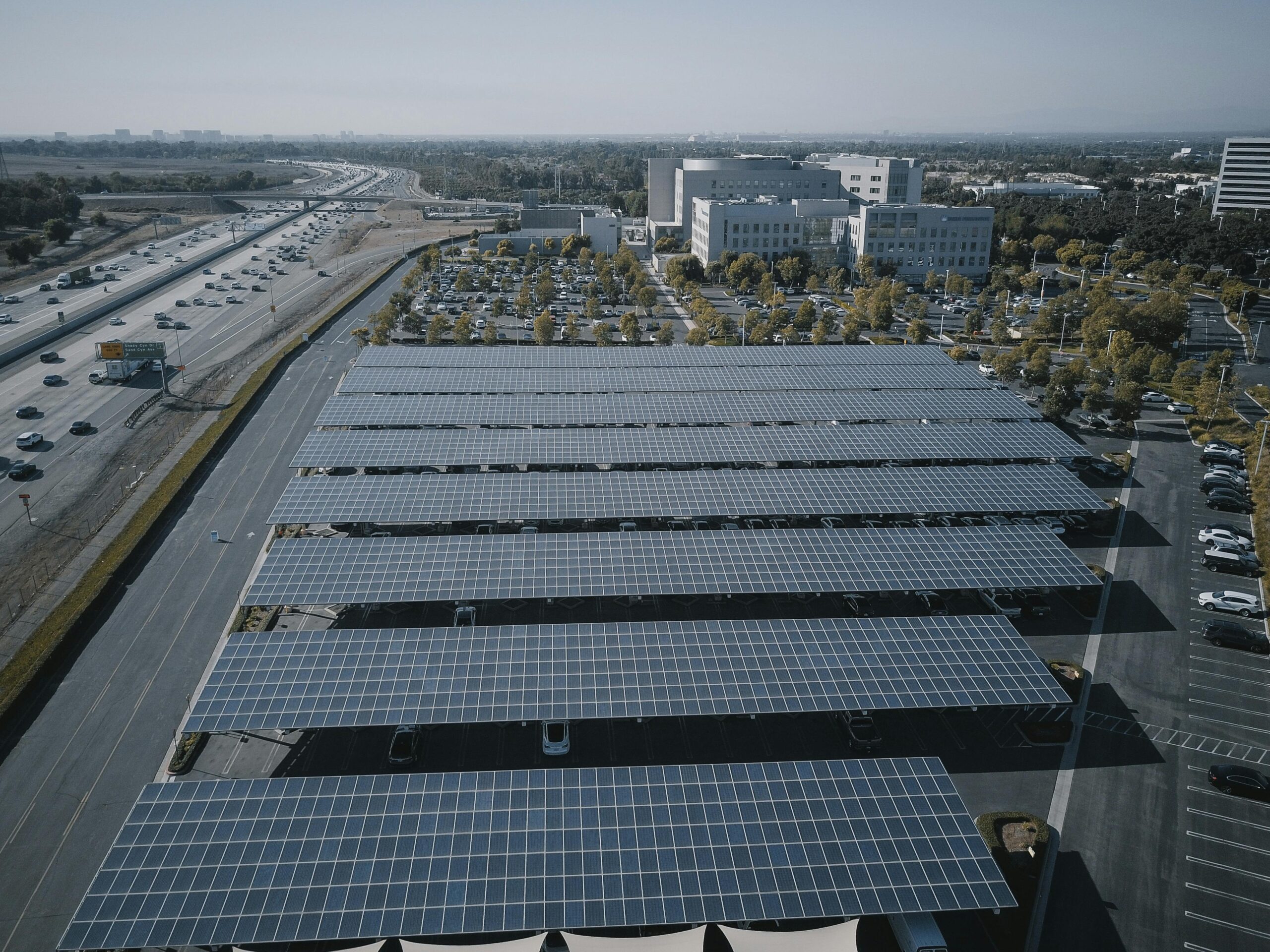Solar energy is no longer a futuristic dream—it’s reshaping how we build, power, and sustain modern infrastructure across the globe. ☀️
The transition from fossil fuels to renewable energy sources represents one of the most significant shifts in human technological advancement. Among these clean energy alternatives, solar power stands at the forefront, driving unprecedented changes in how we design, construct, and operate critical infrastructure systems worldwide.
From towering skyscrapers that generate their own electricity to remote villages gaining access to power for the first time, solar technology is transforming the landscape of infrastructure development. This revolution extends beyond simply replacing traditional energy sources—it’s fundamentally reimagining what’s possible in urban planning, transportation networks, water systems, and communication infrastructure.
🌍 The Solar Revolution in Urban Infrastructure
Cities consume approximately 75% of global energy and produce over 70% of worldwide carbon emissions. This staggering reality has prompted urban planners and developers to integrate solar solutions into every aspect of city infrastructure. Modern urban centers are increasingly incorporating photovoltaic systems into buildings, streets, and public spaces, creating self-sustaining energy ecosystems.
Smart cities like Singapore, Copenhagen, and Dubai have pioneered solar-integrated infrastructure projects that serve as blueprints for future development. These initiatives demonstrate that solar energy isn’t merely an add-on feature but a foundational element of contemporary infrastructure design. Buildings now function as power generators rather than mere consumers, with solar panels seamlessly integrated into facades, rooftops, and even windows.
The architectural landscape is evolving to accommodate solar technology in aesthetically pleasing ways. Solar glass, building-integrated photovoltaics (BIPV), and solar tiles have transformed renewable energy infrastructure from industrial-looking installations into elegant design elements that enhance rather than detract from building aesthetics.
Transforming Commercial and Residential Buildings
Commercial real estate developers recognize that solar-powered buildings offer competitive advantages beyond environmental benefits. Properties equipped with solar infrastructure command premium prices, attract quality tenants, and demonstrate corporate responsibility that resonates with modern consumers and investors.
Residential communities are experiencing similar transformations. Solar-powered neighborhoods generate their own electricity, share excess power through microgrids, and achieve energy independence that protects residents from utility rate fluctuations and power outages. These communities represent a fundamental shift in how we conceptualize residential infrastructure.
⚡ Revolutionizing Transportation Infrastructure
Transportation systems represent some of the largest energy consumers within infrastructure networks. Solar energy is revolutionizing this sector through multiple applications that extend from electric vehicle charging stations to solar-powered roadways and public transit systems.
Solar carports and charging stations are proliferating across parking facilities, shopping centers, and highways. These dual-purpose structures provide shade while generating clean electricity to power electric vehicles, creating self-sufficient transportation ecosystems that reduce grid dependency.
Innovative projects worldwide demonstrate solar energy’s potential in transportation infrastructure. The Netherlands’ solar bicycle path, France’s solar road installations, and China’s solar highway experiments showcase diverse approaches to integrating renewable energy into transportation networks. While some experimental projects face technical and economic challenges, they pave the way for refined solutions that will become mainstream infrastructure components.
Airports and Solar Integration
Airports, with their vast roof spaces and land availability, present ideal opportunities for large-scale solar installations. Major international airports including Cochin International Airport in India—the world’s first fully solar-powered airport—demonstrate the viability of solar energy for meeting the substantial power demands of complex transportation hubs.
These solar airport projects reduce operational costs, decrease carbon footprints, and establish airports as leaders in sustainable infrastructure development. The success stories inspire other transportation facilities to pursue similar initiatives, creating a ripple effect throughout the infrastructure sector.
💧 Water Infrastructure and Solar Synergy
Water treatment, distribution, and desalination processes require enormous energy inputs, making water infrastructure a prime candidate for solar integration. Solar-powered water systems address dual challenges: providing clean water access while reducing the environmental impact of water management operations.
Desalination plants powered by solar energy are becoming increasingly viable, particularly in water-scarce regions with abundant sunshine. Countries like Saudi Arabia, UAE, and Australia are investing heavily in solar desalination infrastructure that promises to address water scarcity without exacerbating climate challenges through fossil fuel consumption.
Agricultural irrigation systems benefit tremendously from solar integration. Remote farming areas often lack reliable grid access, making solar-powered pumps and irrigation systems transformative technologies that boost agricultural productivity while reducing operational costs. These systems provide farmers with energy independence and predictable long-term expenses.
Wastewater Treatment Facilities
Wastewater treatment facilities consume significant electricity for pumping, aeration, and processing operations. Solar installations at these facilities offset energy costs while aligning with the environmental missions of water utilities. Many facilities generate sufficient solar power to achieve net-zero energy status, with some producing surplus electricity that feeds back into local grids.
📡 Communication Infrastructure in Remote Areas
Solar energy has proven revolutionary for extending communication infrastructure to remote and underserved regions. Cell towers, internet hubs, and communication stations in areas lacking grid connectivity can now operate reliably using solar power systems combined with battery storage.
This solar-powered communication infrastructure expansion has profound socioeconomic implications. Communities previously isolated from digital connectivity gain access to information, education, telemedicine, and economic opportunities. The infrastructure development powered by solar energy becomes a catalyst for comprehensive community development.
Telecommunications companies increasingly recognize solar energy as the most cost-effective solution for powering remote installations. The elimination of fuel transportation costs, reduced maintenance requirements, and improved reliability make solar systems superior to traditional diesel generators for off-grid communication infrastructure.
🏗️ Construction and Development Economics
The economics of solar-integrated infrastructure have reached a tipping point where renewable solutions often represent the most financially sound option, even before considering environmental benefits. Declining solar panel costs, improved efficiency, attractive financing options, and various incentive programs have transformed the financial calculus of infrastructure development.
Lifecycle cost analysis increasingly favors solar integration in infrastructure projects. While upfront capital costs may be higher for solar-equipped infrastructure, operational savings, reduced maintenance expenses, and energy revenue generation create favorable long-term returns that appeal to both public and private developers.
| Infrastructure Type | Average Payback Period | Typical Energy Savings |
|---|---|---|
| Commercial Buildings | 5-7 years | 50-80% |
| Residential Communities | 6-10 years | 60-90% |
| Water Treatment Facilities | 4-8 years | 40-70% |
| Communication Towers | 3-5 years | 70-100% |
Government Incentives and Policy Support
Government policies worldwide increasingly mandate or incentivize solar integration in infrastructure development. Tax credits, accelerated depreciation, feed-in tariffs, and renewable energy certificates improve project economics while advancing national energy independence and climate goals.
Building codes and infrastructure standards are evolving to incorporate solar-ready requirements, ensuring that new construction can easily accommodate current or future solar installations. These forward-thinking policies reduce retrofitting costs and normalize solar integration as standard practice rather than optional enhancement.
🔋 Energy Storage: The Missing Piece
Energy storage technology represents the critical complement to solar infrastructure, addressing intermittency challenges and enabling reliable 24/7 operation. Battery systems integrated with solar installations allow infrastructure to function independently of grid connectivity and weather conditions.
Lithium-ion battery costs have declined dramatically, making storage economically viable for infrastructure applications. Emerging technologies including solid-state batteries, flow batteries, and hydrogen storage promise even greater capabilities that will further enhance solar infrastructure reliability and efficiency.
Microgrids combining solar generation with energy storage create resilient infrastructure systems that maintain operations during grid outages. This resilience proves invaluable for critical facilities including hospitals, emergency services, water treatment plants, and communication networks that require uninterrupted power supply.
🌱 Environmental and Social Impact
Beyond the technical and economic dimensions, solar-powered infrastructure delivers profound environmental and social benefits that justify its rapid adoption. Every megawatt of solar capacity displaces fossil fuel consumption, reducing greenhouse gas emissions and air pollution that harm human health and ecosystems.
The infrastructure transition to solar energy creates employment opportunities across manufacturing, installation, maintenance, and management sectors. These jobs often provide accessible career pathways for workers transitioning from declining fossil fuel industries, supporting just transition initiatives.
Communities hosting solar infrastructure projects often experience improved quality of life through reduced pollution, lower energy costs, and enhanced energy security. Public facilities powered by solar energy demonstrate government commitment to sustainability while reducing taxpayer burden for long-term operational expenses.
Educational and Demonstration Value
Solar-integrated infrastructure serves educational purposes, raising public awareness about renewable energy possibilities. Schools equipped with solar systems incorporate these installations into curricula, inspiring students to pursue clean energy careers and normalize renewable technology for future generations.
Demonstration projects showcasing successful solar infrastructure implementations provide blueprints that accelerate adoption elsewhere. Success stories reduce perceived risks and overcome institutional inertia that often slows infrastructure innovation.
🚀 Emerging Technologies and Future Directions
The solar revolution in infrastructure development continues accelerating as emerging technologies promise even greater capabilities. Perovskite solar cells, tandem solar technologies, and quantum dot photovoltaics under development offer higher efficiencies at lower costs, potentially transforming what’s economically feasible.
Artificial intelligence and machine learning optimize solar infrastructure performance through predictive maintenance, energy management, and grid integration. Smart systems maximize energy generation, minimize losses, and coordinate with broader infrastructure networks for peak efficiency.
Transparent solar panels capable of generating electricity while maintaining window functionality represent game-changing technology for building infrastructure. These innovations eliminate the trade-off between natural lighting and energy generation, enabling comprehensive building envelope electricity production.
Space-Based Solar Power
Visionary concepts including space-based solar power systems that collect energy in orbit and beam it to Earth-based infrastructure represent the long-term frontier of solar technology. While significant technical challenges remain, these concepts illustrate the expansive potential of solar energy for meeting future infrastructure power demands.
💡 Overcoming Implementation Challenges
Despite tremendous progress, solar infrastructure development faces ongoing challenges requiring attention and innovation. Grid integration complexities, regulatory barriers, financing obstacles, and technical limitations in certain applications demand continued focus and problem-solving.
Utilities and grid operators must adapt infrastructure and regulations to accommodate distributed solar generation and bidirectional power flows. Smart grid technologies, updated interconnection standards, and modernized rate structures enable seamless integration of solar-powered infrastructure into broader energy systems.
Workforce development represents another critical need. The rapid expansion of solar infrastructure demands trained professionals capable of designing, installing, and maintaining these systems. Educational institutions and industry partnerships must scale training programs to meet growing workforce requirements.

Building Tomorrow’s Infrastructure Today
The solar revolution in infrastructure development represents more than technological change—it embodies a fundamental reimagining of how human systems interact with the natural environment. Solar-powered infrastructure demonstrates that economic development and environmental stewardship are complementary rather than competing objectives.
Every solar panel installed on a building, every solar-powered streetlight, every renewable-energy water treatment facility represents progress toward resilient, sustainable infrastructure systems. These individual projects collectively create the foundation for a cleaner, more prosperous future.
The transition to solar-powered infrastructure requires vision, investment, and commitment from governments, businesses, and communities. However, the pathway forward is clear, the technology is proven, and the benefits are undeniable. Solar energy isn’t simply powering the future—it’s enabling infrastructure that serves humanity while respecting planetary boundaries.
As costs continue declining, efficiency keeps improving, and implementation experience grows, solar integration will transition from innovative to standard practice in infrastructure development. Future generations will view fossil-fuel-dependent infrastructure as archaic, wondering why humanity took so long to embrace the abundant, clean energy source that powered Earth’s ecosystems for billions of years before humans harnessed electricity. The solar revolution in infrastructure development represents our species’ realignment with natural energy flows, building systems that work with rather than against the environment that sustains all life. ☀️🌍
Toni Santos is an urban innovation writer and researcher dedicated to exploring how technology, sustainability, and design are reshaping the cities of tomorrow. With a deep interest in smart infrastructure and human-centered development, Toni studies how data-driven systems and green technologies can create more livable, resilient, and efficient urban environments. Fascinated by sustainable architecture, IoT integration, and next-generation mobility, Toni’s work connects environmental awareness with digital transformation. Through research and storytelling, he examines how intelligent planning and renewable innovation can redefine the relationship between people and their cities. Blending urban design, environmental science, and systems thinking, Toni documents the breakthroughs that are reimagining how we build, move, and coexist. His work highlights the architects, engineers, and technologists leading the charge toward smarter, greener futures. His work is a tribute to: Green architecture as the foundation for sustainable living IoT innovation shaping the infrastructure of connected cities Mobility systems and renewable energy driving urban transformation Whether you’re an architect, engineer, or city planner, Toni Santos invites you to explore the technologies and ideas building the smart, sustainable cities of the future — one street, one system, one vision at a time.




